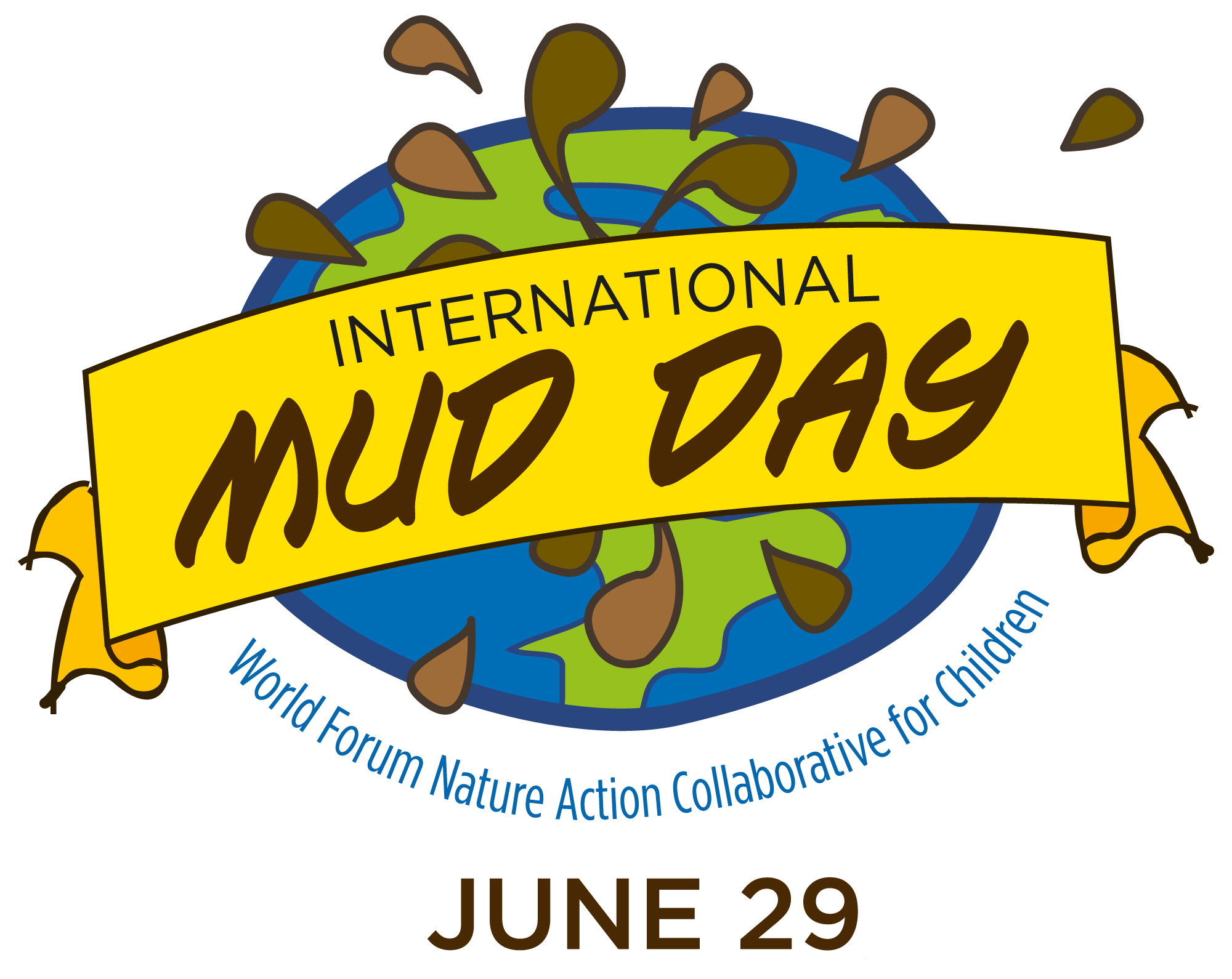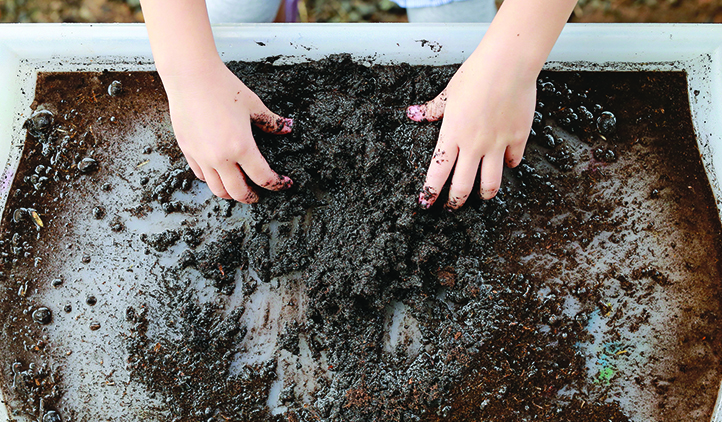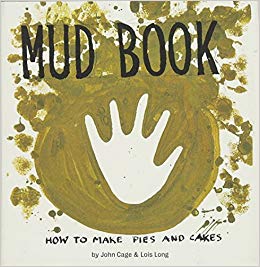As early childhood professionals we know that learning can be messy. Children often seem to be at their happiest when they are digging, painting, or creating. In fact, if each of us paused for a moment and thought about it, we could probably easily recall a time when the children in our care were consumed by swirling paint colors and painting over the same area on the page, piling sand into large mounds, or collecting an assortment of sticks and rocks. In each of these activities, children are honing many skills—fine motor, gross motor, cognitive awareness, and math and counting. Help children and families in your setting embrace messy play by getting outside and celebrating International Mud Day on June 29.
 International Mud Day started in 2009 at the World Forum for Early Childhood Care and Education in Belfast, where Gillian McAuliffe from Western Australia and Bishnu Bhatta from Nepal discussed the challenges children face when playing in mud. Preferences for clean play, minimal access to cleaning supplies, lack of wardrobe, or living in the desert or sandy environments make it difficult for many children to enjoy the advantages of mud play. In an effort to encourage children’s play in nature globally, International Mud Day was implemented.
International Mud Day started in 2009 at the World Forum for Early Childhood Care and Education in Belfast, where Gillian McAuliffe from Western Australia and Bishnu Bhatta from Nepal discussed the challenges children face when playing in mud. Preferences for clean play, minimal access to cleaning supplies, lack of wardrobe, or living in the desert or sandy environments make it difficult for many children to enjoy the advantages of mud play. In an effort to encourage children’s play in nature globally, International Mud Day was implemented.
There are several advantages to playing in mud. Research shows that children who play outside frequently are happier and healthier. Mud is an accessible material for children at all developmental levels, and it enables children to use all of their senses. As Richard Louv wrote in his popular text Last Child in the Woods, “Nature inspires creativity in a child by demanding visualization and the full use of senses.” Mud play is arguably a whole body experience.
Engage children in mud play in simple or elaborate ways. Inform parents about about your day of mud play (better yet, invite them to join!) and be sure that children are wearing proper clothing, preferably rain attire, or have extra clothes on hand for children to wear in the mud. Talk with them about their interests and how they would like to play. Locate or make a patch of mud in your outside play area (or sensory table) and consider the following activities:

- Scoop, dig, pat, poke, and experiment with mud. Offer shovels, spoons, measuring cups, funnels, etc., and allow children to experiment.
- Paint with mud. Offer plain or mud colors (add food coloring to mud) in separate containers and set out paintbrushes. Set up butcher paper outside for children to paint on with brushes or their hands.
- Collect sticks, stones, seed pods, leaves, etc., and offer them with mud for children to build towers, animal homes, or anything that comes to mind.
- Make mud pies. Save those sticks, stones, seed pods, leaves, and other nature items for children to decorate mud pies and other culinary creations. Offer kitchen utensils to extend their play.
- Set out toy vehicles, PVC pipes, and cardboard for children to make roadways, ramps, and tunnels.
- Test materials. Mud happens when dirt and water mix, but what happens when sand and water mix, gravel and water, or other nature items and water? Support children’s scientific explorations by encouraging simple experiments. Extend this play by offering materials for children to make rivers and dams.
After celebrating International Mud Day, talk with children and families about what they  learned. How was playing with mud different than playing with other materials? Was it enjoyable? How did everyone feel during the play? Did they make or create something they hadn’t thought of before? Consider make mud play an outdoor center or a normal part of your outdoor play experience. Offer books about mud, such as Mud Book: How to Make Pies and Cakes by John Cage, to inform and inspire children.
learned. How was playing with mud different than playing with other materials? Was it enjoyable? How did everyone feel during the play? Did they make or create something they hadn’t thought of before? Consider make mud play an outdoor center or a normal part of your outdoor play experience. Offer books about mud, such as Mud Book: How to Make Pies and Cakes by John Cage, to inform and inspire children.
Back to blog listing